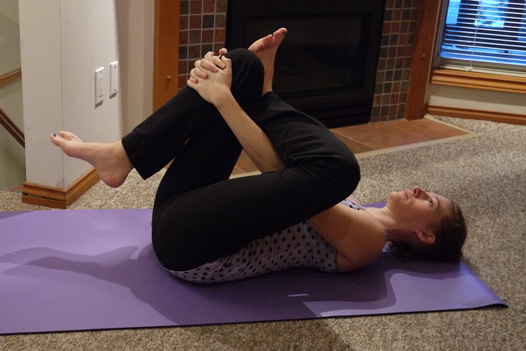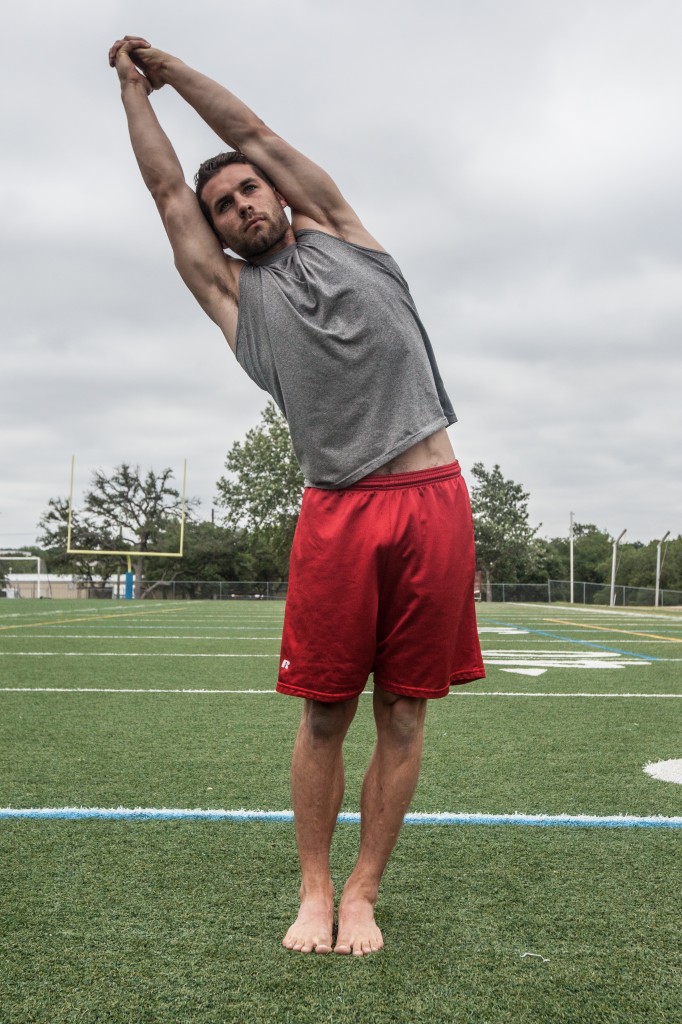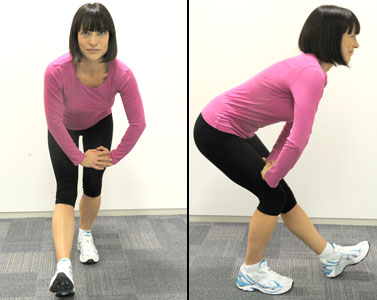I admit it. I often feel pain after a half an hour in my garden. All that kneeling, squatting, bending, duck walking, raking, shovelling, and hoeing take their toll. I found my relief in yoga and other basic stretches, which I can credit to my former French instructor, Ms. Webber, who also happened to be a yogi. You see, at the beginning and end of each class she would show us a different yoga stretch and have us stretch before and after class to loosen our bodies and minds. Uncommon technique, I admit, but it worked. (It also happened to be the best foreign language class I ever took.) Here are some of my favourites, which I still do to day before work or just when I need a break. They also happen to be entirely handy for loosening up muscles when gardening.
Threading the Needle
 If you search for Threading the Needle poses in yoga, you’ll find two versions. One is great for the upper body, but I’m talking about the one for the lower body. This pose is a dream for opening up the hips after a long day of squatting in the garden.
If you search for Threading the Needle poses in yoga, you’ll find two versions. One is great for the upper body, but I’m talking about the one for the lower body. This pose is a dream for opening up the hips after a long day of squatting in the garden.
- Begin by laying down, with knees up and feet flat on the ground.
- Cross one leg over the other at the knee.
- Bring bent knee to your chest as you reach through the key hole made by your legs to hold the bent knee.
- Breathe evenly while you hold the pose, relaxing the upper body into the floor.
- When you’re ready, gently lower the legs to the floor. Switch, then repeat on the other side.
I like doing this 3 times on each side. Usually by that time I’m feeling pretty loose and ready to move onto the next pose.
Standing Side Bend
 Bending at the waste to dig holes or drag the hoe across the rough ground makes our backs and sides ache. The standing side bend helps combat that by giving our bodies a different way to move as well as stretching those tense muscles in the lower back. It’s no wonder it’s one of the most often seen stretches on any sports field. As a bonus, if you push your hip out as you stretch, this move also stretches the elusive IT band that can cause knee problems down the road.
Bending at the waste to dig holes or drag the hoe across the rough ground makes our backs and sides ache. The standing side bend helps combat that by giving our bodies a different way to move as well as stretching those tense muscles in the lower back. It’s no wonder it’s one of the most often seen stretches on any sports field. As a bonus, if you push your hip out as you stretch, this move also stretches the elusive IT band that can cause knee problems down the road.
You can do this freestanding, as shown to the left, or holding onto something for a deeper stretch. Either way, here’s how to properly use this pose:
- Start with feet together, arms casually at your side.
- Breathe in, raising arms over your head.
- Breathe out and slowly bend straight to the side.
- Keeping your stomach pulled in, breathe in and out while holding the pose.
Grasping your hands over head results in a deeper stretch arms, especially if you use this opportunity stretch the arms as well. To achieve that extra stretch, grasp your hands over head and gently pull the upper arm down just a little further with your finger tips.
I found this pose most useful after long periods of using my back muscles, such as moving mulch, hoeing, or digging. I always push my hips out gently to stretch the IT band and pull the arms a little to deepen the stretch. Together, it means that I can keep working pain free for a few more hours a day.
Runner’s Hamstring Stretch
 Duck walking while pulling weeds usually calls for some quick stretching between sections of the garden. Ms. Webber swore by the runner’s hamstring stretch, which I ignored until one fine day that I removed weeds from a new apartment we moved into. After several hours of duck walking here and there to get weeds and stones out from between existing plants, I finally caved in and tried it. It was love at first “hurts so good” pain for it stretched the hips, hamstrings, and calves very efficiently.
Duck walking while pulling weeds usually calls for some quick stretching between sections of the garden. Ms. Webber swore by the runner’s hamstring stretch, which I ignored until one fine day that I removed weeds from a new apartment we moved into. After several hours of duck walking here and there to get weeds and stones out from between existing plants, I finally caved in and tried it. It was love at first “hurts so good” pain for it stretched the hips, hamstrings, and calves very efficiently.
- Start by standing up straight, feet hip width apart, and hands by your side.
- Place one foot slightly in front of the other. You want it far enough out to feel the stretch, but not so far as to fall off balance. This is usually about 6 – 8 inches.
- Keep the front leg straight, and bend the supporting leg. Do not let your knee go in front of your toes on the supporting leg.
- Keeping your core strong, hinge at your hips so you are leaning over your legs. You can place your hands on your knee or hips to help you stretch your hips
- Allow your toes on the front foot to come up naturally for a gentle stretch in the calf, or flex the foot for a full calf stretch.
- Switch legs and repeat.
I admit, I love this stretch so much now that I even use it to stretch out my legs and hips while waiting for barbecue. It is simple, but it does wonders to help develop stretch and flexibility.
